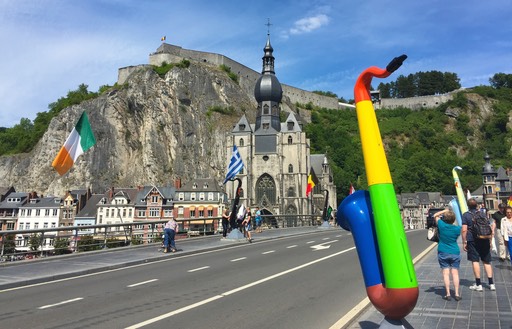
We shared our last French lock with a nice Dutch couple and a flock of Canada geese. The geese knew the drill well. They waited until the lock doors closed, then jumped in and hitched a ride down and into Belgian waters. We sadly said "au revoir" to France and reluctantly handed over the yellow control button.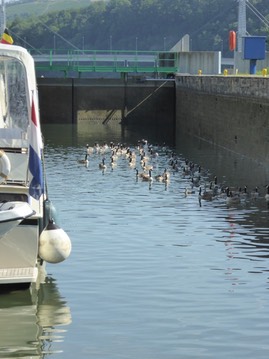
We followed the widening Meuse through forested mountains. Tall jaggered rocks and cliffs gave the area a special appeal.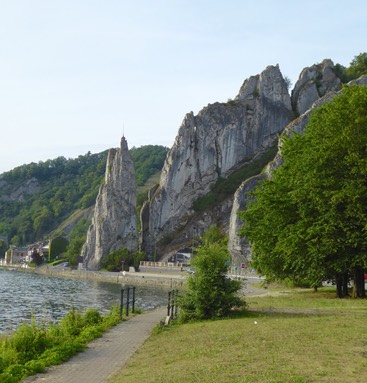
All along we saw many pretty moorings at Hastière, Waulsort and Anseremme. We moored at a serviced pontoon at the south end of Dinant which was almost empty and had more privacy than the one next to all the restaurants and shops. The town was crowded due to a Sunday market with music, carousels and eateries. We decided to do the important sight seeing first and walked up to the old Leffe Abbey where for years the monks used to brew the famous Belgian beer. 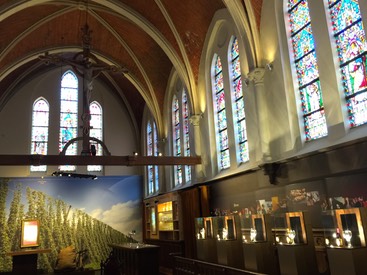 Now the abbey houses a very interesting museum about beer making and life in the middle ages. We learned that beer was an important source of vitamin B and amino acids during times of famine and constituted a much “healthier” drinking option than the polluted water. So we didn’t have to be asked twice when being told that the tour included a beer tasting.
Now the abbey houses a very interesting museum about beer making and life in the middle ages. We learned that beer was an important source of vitamin B and amino acids during times of famine and constituted a much “healthier” drinking option than the polluted water. So we didn’t have to be asked twice when being told that the tour included a beer tasting. 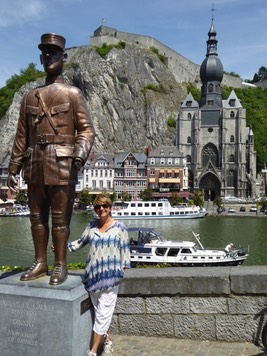
The first striking sight of Dinant is of course the Collégiale Church in front of the limestone cliff. Above looms the citadel from where soldiers had a good view of the area, and most importantly, the bridge and could shoot down on approaching enemies.
This little town had a very turbulent past being caught up in fights between Namur and Liège, the French, the Spanish and the Dutch. In the process the towns main industry of copper beating was banned and lost, and during revolution times the monks also lost their right for beer brewing which went into private hands.
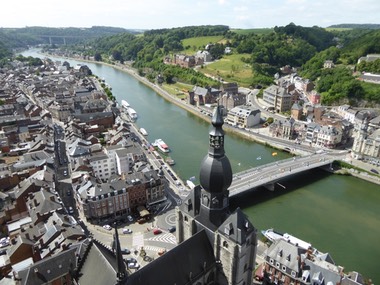
We took the cable car up to the citadel and joined a guided tour which, although in French and Flemish, gives access to the rooms and galleries. A major part of the tour is the WW1 experience. Again, Dinant being in the path between Germany and France was caught up in the worst. There is an account of german atrocities, killing over 600 civilians in August 1914.
On the 15/08/1914, also called bloody Sunday, the French fought to recapture the town and citadel, and it was in this process that Charles de Gaulle was shot in the leg. The tour leads through reconstructed WW1 trenches with flashing lights and ceaseless gunfire noise.
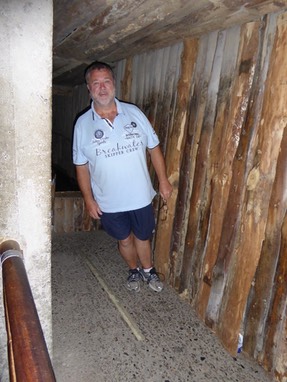
The sensory experience continues in a simulation of a collapsed trench where the floor and walls are tilted and not having any vertical references, it induces the feeling of vertigo. We really struggled to stay upright.
We recovered only after a cup of strong coffee at the riverside and a shared “Coque de Dinant”, a traditional biscuit going back to 15th century. When the town was besieged by Charles the Hardy, the town people gathered all the flour and honey the had left. The dough was then pressed into moulds fashioned by the local copper workers and baked in an oven.
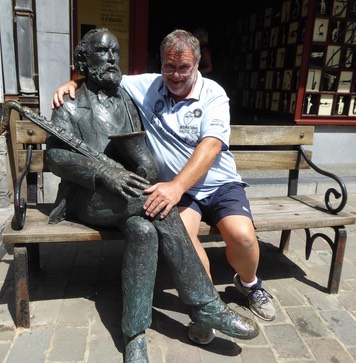
Strengthened we then followed the colourful saxophones to the birth house of Adolphe Sax where Austin had a Tête à Tête with the inventor about a possible guitar/saxophone jam session.